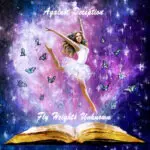Electronic Music History and Today’s Best Modern Proponents!

Electronic music history predates the awesome period by several decades. It started with regularly dark advances nearly a century ago. Electronic music history is no longer something new; new ages have recognized it as a standard. However, electronic music history has experienced an uneven and moderate road to mass crowd acclaim. Its proponents are John Cage, Pierre Schaeffer, Laurens Hammond, and many more.
John Cage
Known for his groundbreaking compositions, John Cage is one of the most important modern proponents of electronic music. Cage’s early works were written in the 12-tone method of Schoenberg, but he soon began experimenting with unorthodox instruments such as the prepared piano. This instrument was modified to create various abrasive sounds, and he also used record players, tape recorders, and radios. He gave his first public performance in Chicago in 1941, and it was the start of his rise to a leading role in the American avant-garde.
One of the most influential works by Cage is 4’33”, a work that is entirely silent but consists of concert hall noise. It was written 15 years after Cage’s first visit to an anechoic chamber at Harvard University. After this concert, Cage’s music began to be more suited to theater than to the home, where it was originally intended to be played.
His influence is widespread in other genres, too. He was hugely influential in the visual arts, and his ideas spread at a famous Greenwich Village hangout. His students included artists such as Jasper Johns, Robert Rauschenberg, and Yoko Ono. According to Alex Ross, a music critic for The New Yorker, Cage had a huge impact on musicians as well as artists.
Although many consider him a genius, Cage preferred to be called an inventor. His mentor and friend Arnold Schoenberg considered him a genius. John Cage once promised to devote his life to music, which is in line with Buddhist philosophy. His work has influenced the world of experimental music. There are several renowned contemporary advocates of electronic music, including composers like Philip Glass and Theodore Dreiser.
In addition to his compositions, John Cage was also a writer and poet. His book M was published in 1973, and his collaboration with the artist Kathan Brown resulted in a series of watercolors and prints a year until he died in 1978. It is difficult to define the artist without knowing how he lived his life. He had a very busy touring schedule, so it was essential to support his creative output.
In addition to his compositions, Cage wrote operas, which were first performed by the composer in 1987. These operas share the same title as Europeras II and III, but they require larger forces than their predecessors. They are chamber-scale works, which makes them more complex. However, he also credits his influence on the development of electronic music by incorporating the use of the turntable.
Pierre Schaeffer
The title of the book is a play on the French language, evoking the name of the former president of the Republic. The work is an evocation of an alternative history of music, one that fuses both past and present. Schaeffer began his career working as an engineer for the RDF broadcasting company. He was inspired by radio art and theories by Italian futurist Luigi Russolo. The use of recorded sound in cinema also inspired him, and he convinced the network to allow him to conduct music research. He called his research into noises,’ and was soon granted the time to conduct experiments in his newfound field.
This innovative music is a testament to Schaeffer’s vision and influence. His approach to music-making merged engineering and art. His ideas flipped conventional music theory on its head and turned traditional composition processes on their heads. Schaeffer’s approach began with field recordings and fragments of sound and was later embellished with studio techniques. His works reshaped the history of electronic music, and today they stand as some of its greatest modern proponents.
While many people associate musique concrete with experimental noise, the technique is more widely used in dance music. Its main characteristic is the incorporation of random and manipulated sounds into a musical composition. This technique is now ubiquitous and has continued to be employed by many contemporary electronic musicians. It also provides an interesting background for the study of electronic music history. It is a great book to introduce young and old to this exciting genre of music.
While electronic music may have begun with electronics, it didn’t stop there. In the 1940s, Schaeffer’s acoustic work with a reel-to-reel tape recorder became the subject of interest for Avant-garde European composers. This was also the time when Schaeffer founded his studio of tape compositions and worked with the composer Pierre Henry to produce many classic Concrete compositions.
While electronic music history predates rock and roll by several decades, it began about a century before. The genre has experienced a long road to mainstream acceptance. The first electronic music was written in French, and it was only a matter of time before Bach began to make electronic music. But it continues to be an integral part of contemporary culture today. But it has had its challenges.
As a musicologist, Schaeffer has investigated musical languages. For example, music is a schema with many ways to express itself. In Bach’s “Theatre of the Four Seasons,” he did not specify the instruments he used to play it. Instead, he focused on the mystery of music, in the form of a theme and variations.
Laurens Hammond
The Hammond organ is a well-known piece of electronic music history. The Hammond organ was invented by Laurens Hammond in 1935. In its early years, the instrument was a highly avant-garde piece of music that featured drawbars for tuning and modifying the sound. But, soon enough, it became one of the most popular instruments of all time. Today, there are numerous electronic keyboard instruments to choose from.
While Hammond received his early education in Europe, he graduated from Cornell University in 1916 and began working privately on his original inventions. He first patented a soundless clock, a clock with an enclosed spring motor, and he sold the marketing rights to his invention. His passion for experimenting led him to invent the tick-less clock, which became the backbone of the Hammond organ.
The invention of electronics was first made possible by Telharmonium, a gargantuan instrument designed by Thaddeus Cahill in 1898. The instrument was the first grand-scale electrically produced musical instrument, and it weighed 200 tons. Hammond’s organ took the principles of Cahill’s instrument design and used them to create his unique sound.
After the invention of the synchronous motor, Hammond built a cheaper version of the instrument. The chord organ opened up an entirely new market for musicians. In 1953, Hammond Instrument Company became the Hammond Organ Company and continued to manufacture organs and electric clocks. Eventually, Hammond retired in 1960 and spent the rest of his life playing electronic music in homes all over the world.
Laurens Hammond made a great contribution to the world of electronic music. The Hammond organ was a revolutionary instrument. It paved the way for electronic keyboard instruments. This organ has been an integral part of electronic music since its birth. While it embodies many innovations, it was largely an instrument for live performances. Nevertheless, Hammond’s legacy will be felt by many generations to come.
The incorporation of electronics into art music was inspired by the Dada and Futurist movements. These movements were interested in technology, machinery, and resistance to the status quo. The Futurists’ experiments centered on electronic music included Luigi Russolo. As the history of electronic music progressed, more compositions started incorporating voices and live instruments.






Comments
This post currently has no comments.